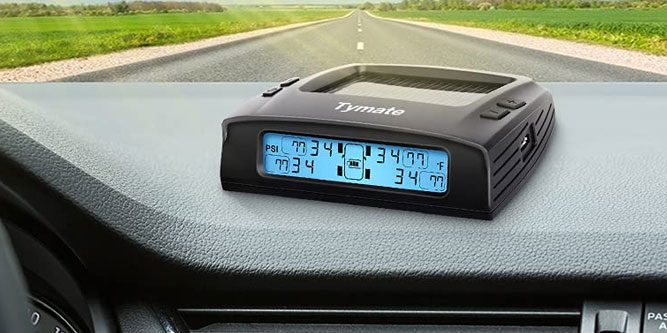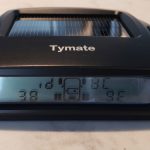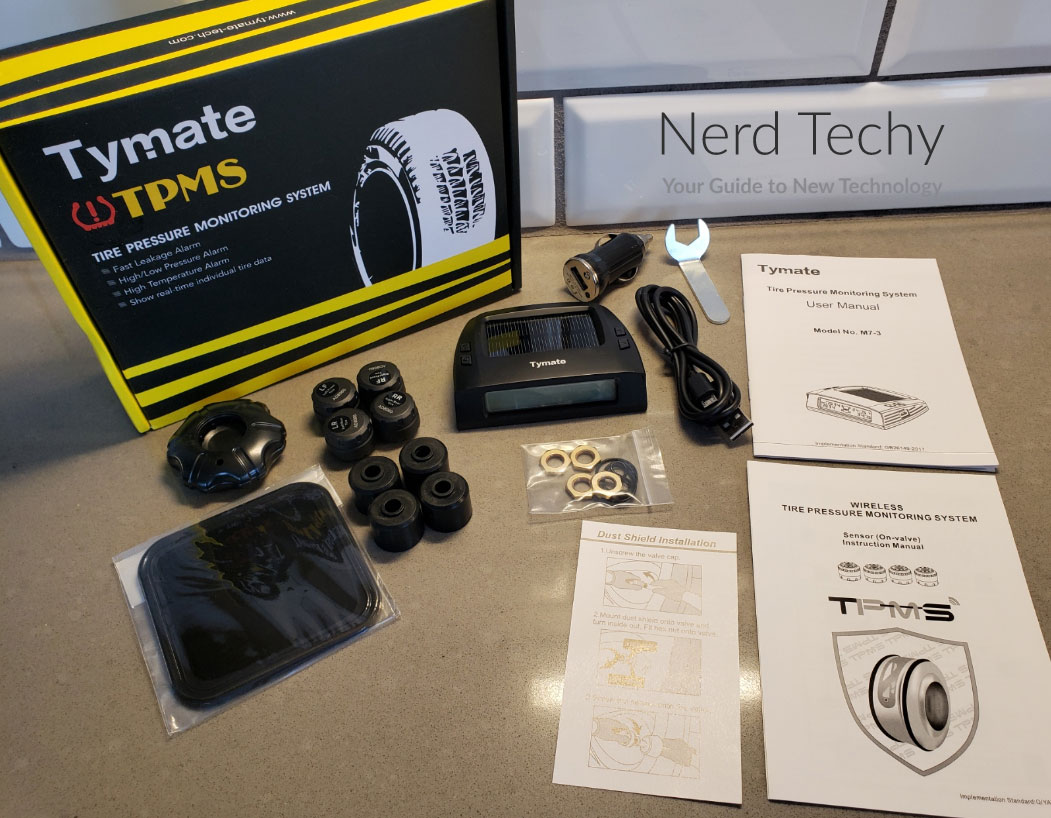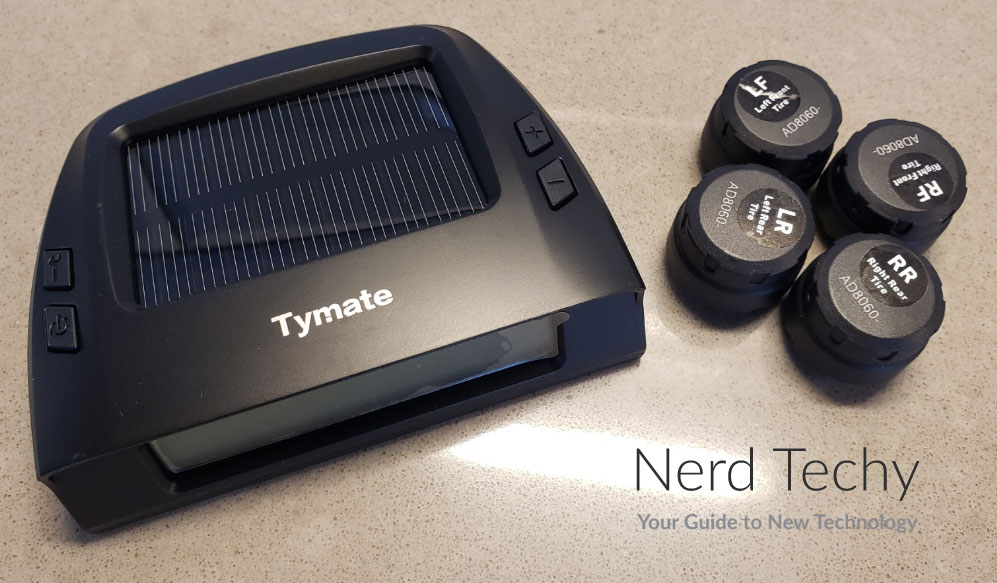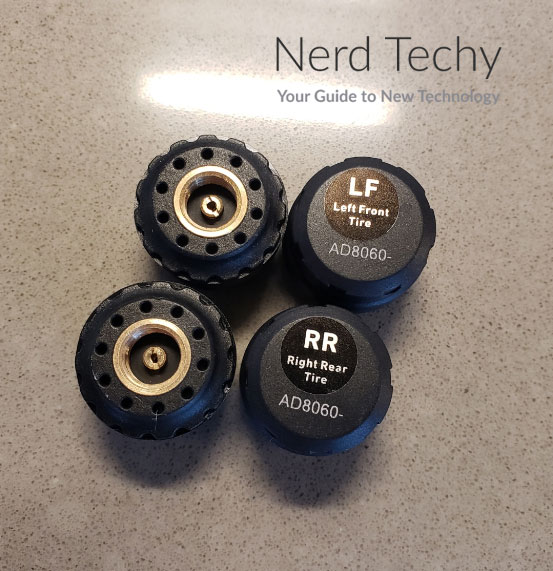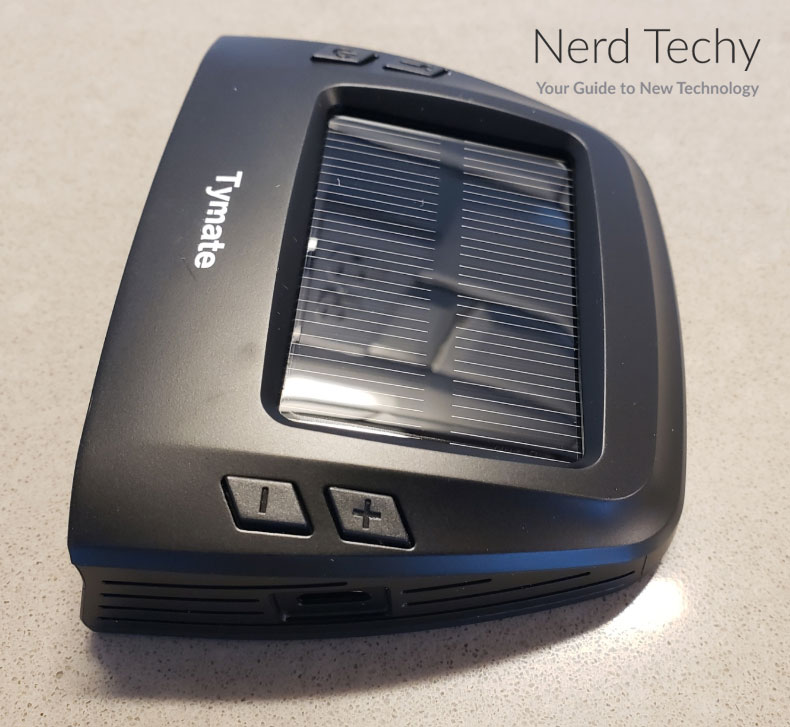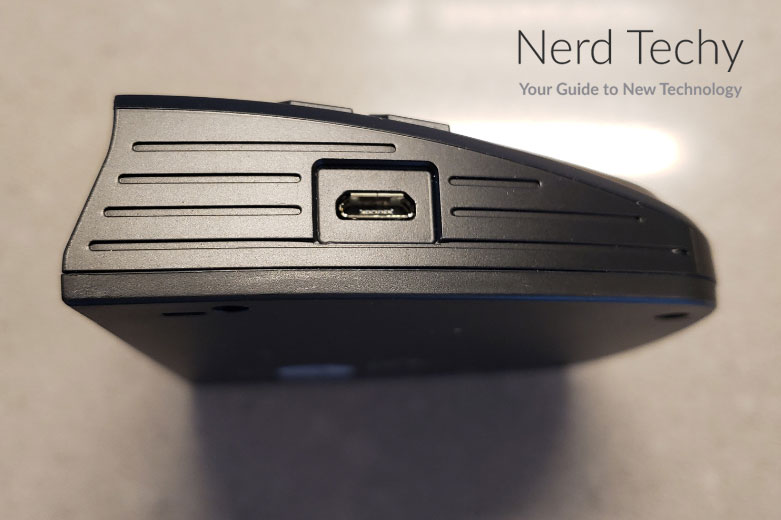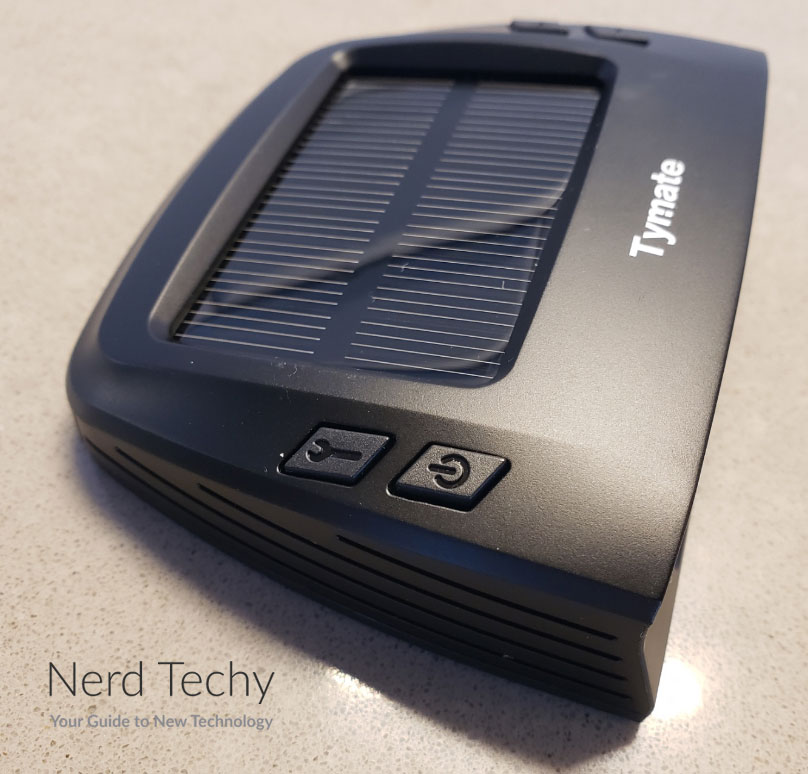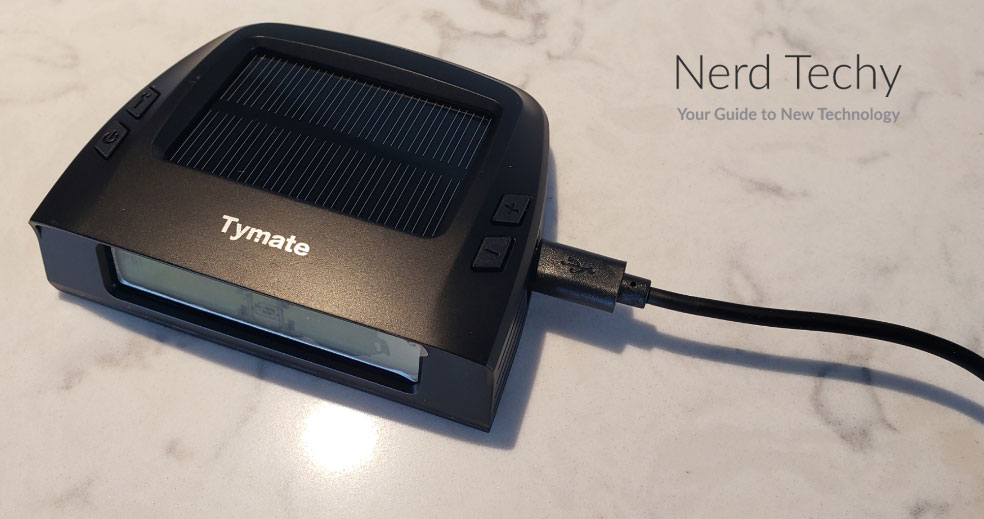Your tires are one of the most important parts of your vehicle. They’re literally where the rubber meets the road. If your tires are overinflated, you risk a blowout. If they’re underinflated, you’ll have poor traction and reduced gas mileage. That’s why it’s important to keep a vigilant eye on your tire pressure. In the past, this meant using a tire gauge from time to time. These days, a TPMS can do the job more easily.
A TPMS, or tire pressure monitoring system, is an electrical system that tracks your current tire pressure. It provides alerts when your tires get overinflated or – more frequently – become underinflated. That way, you don’t have to manually check your tires. Unless you receive an alert from your TPMS, you know you’re good to go.
We’re about to review the Tymate Tire Pressure Monitoring System. This is an aftermarket TPMS for your car, truck SUV, RV, or camper. But what separates it from other third-party TPMS systems, and is it the right choice for you? To find out, we’ll need to look at all of its features. We’ll look at the readings it takes, how accurate it is, and how it installs. After that, we’ll be ready to deliver our verdict. Let’s begin!
Control Unit
The Tymate Tire Pressure Monitoring System is centered around a control panel that sits on your dashboard. It’s molded from black plastic, with an irregular, flared design. The maximum width is 4.13 inches, the length is 2.95 inches, and it’s less than an inch thick. The top panel is slightly arched, like a wave, and is black in color.
On the front of the housing is a black and white LCD display. This display shows the pressure for each tire, split to the left and right. It also shows the current tire temperature, as well as your car battery voltage. In the center of the display, you’ll see the current charge level of the TMPS battery. It’s a simple bar display, much like the one on your cell phone, but it gets the job done. The neat thing about this display is that it has an automatic backlight. It’s bright during the day so you can read it, and dim at night so it won’t blind you.
On top of the control unit, towards the sides, is a set of four buttons. These are used to adjust your tire pressure settings. Different tires and vehicles have different pressure requirements. This means you need to adjust your settings before the system will work properly. You can choose your own maximum and minimum range, anywhere from 12 to 87 PSI.
The “+” and “-“ buttons are used to adjust to the optimal pressure. The “Set” button locks in your settings. It’s easy and intuitive for initial setup. However, you’ll want to keep the manual handy if you’re going to make other adjustments. Changing from Centigrade to Fahrenheit, for example, is not intuitive at all.
Sensors and Other Components
The number of tire sensors will depend on which version of the system you order. The black version comes with four sensors, and is suitable for most vehicles. However, there’s a blue version that comes with six sensors. This is helpful if you’re towing a trailer or driving a vehicle with dual rear axles. If you’re outfitting an RV, you’ll definitely want the blue version.
The sensors themselves are little black cylinders that attach to your valve stems. They measure 0.82-inch in diameter, and 0.66-inch long. The kit comes with everything you need to install them. But before you do, make sure to set up the control unit! If you don’t, the sensors will get janky and won’t return accurate readings. Once you’ve input your settings, you’ll be ready to install the sensors.
First, you need to unscrew your old valve caps. Next, attach the nut that comes with each sensor. Make sure to screw it securely onto the cap. Slip the washer over the nut, then screw the sensor onto it. You’ll have to tighten it with the little wrench that comes in the package. Finally, you’ll want to test the connection to make sure there are no leaks. To do this, fill a spray bottle with soapy water and spray it liberally on the connection. As long as there are no bubbles, you’re good to go.
All things considered, this is a pretty standard installation process for a TPMS system. But what if you want a wider pressure setting range? In that case, check out the Guta RV TPMS. It installs in much the same way, but you can set it anywhere from 0 to 188 PSI.
Sensor Performance
The built-in chip in each sensor will transmit constant data to the control unit. The signal range of 45 feet is impressive, and will be long enough for almost any vehicle. It’s reliable and stable, and doesn’t cut in and out over time. It’s also accurate to within 3 PSI. That’s not exactly Formula One-grade precision, but it’s good enough to let you know if you have a problem.
The control unit will continuously monitor the data from the sensors, and provide several types of warning. These include:
- Fast leakage – If your tire experiences a sudden drop in pressure, the system will sound an alarm.
- High or low pressure – This will warn you if your tire pressure is above or below the range you’ve set.
- High temperature – This will alert you if your tires are starting to get dangerously hot.
- Vehicle battery – While your car battery has nothing to do with your tires, it’s still nice to know if you’re losing voltage.
It’s important to note that the sensors’ internal batteries are rated to last for 2 years. After that, you’ll need to replace them.
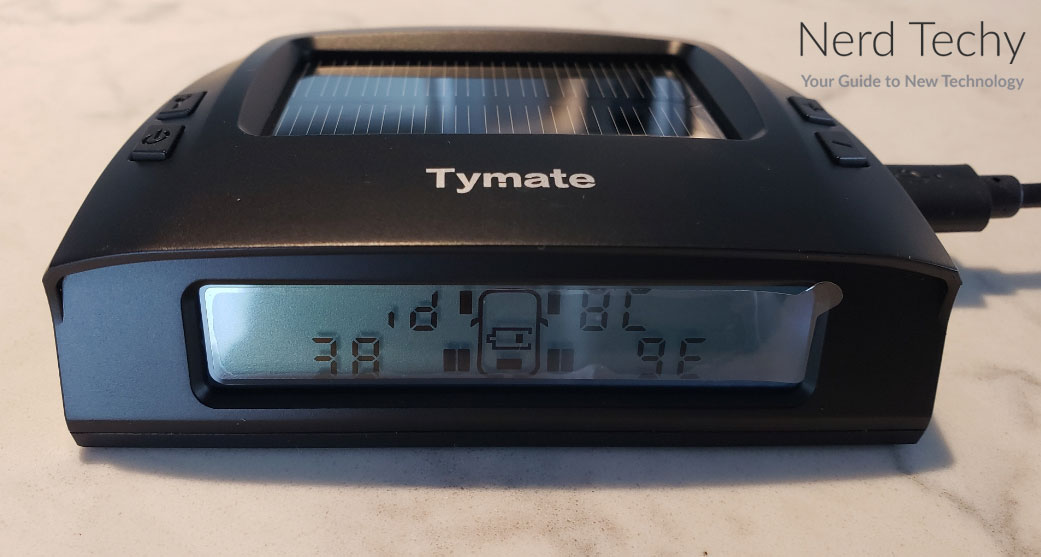
Extras
There are a few bonus features worth mentioning. To begin with, most of the top of the control unit is occupied by a built-in solar panel. On a sunny day, it should remain charged at all times, even while it’s running. But what if you’re driving at night, or you’re parked in a shady area? In that case, you can use the included Micro USB cable. Plug it into the port on the right side, and you’ll have all the power you need.
In order to save power, the system will automatically go to sleep after 10 minutes of inactivity. When you start driving again, it will wake up. Keep in mind that it doesn’t actually know when your ignition is turned on. Instead, a set of motion detectors in the sensors let the control station know when you’re driving. If you’re idling or sitting in traffic, it might think your car is off.
Finally, the blue version of the system comes with a little repeater fob. You can hardwire this fob into your vehicle’s electrical system to extend the range of the control unit. This should rarely be necessary, but it can be helpful if you’re outfitting a tractor-trailer.
Why Use an Aftermarket TPMS?
Before we wrap up, we should address the elephant in the room. Most new vehicles these days already have a TPMS. So unless you have an old car or RV, why would you install an aftermarket system? As it turns out, there are two kinds of TPMS: direct and indirect. The Tymate system is a direct system, and is superior to any indirect system. Here’s why.
An indirect TPMS doesn’t actually measure your tire pressure. Instead, it’s connected to your anti-lock brake system. The ABS system monitors the size of your tires among other things. And that tire size will change as you gain or lose pressure. When the size is too big or too small, it will trigger the TPMS. Many carmakers use indirect TPMS systems because it’s more affordable. Without dedicated sensors, there are fewer parts. Along the same lines, there are fewer possible points of failure.
That said, indirect systems have some serious disadvantages. To begin with, they have to be frequently recalibrated. The TPMS will need to be reset whenever you change tires or have them rotated. It will even have to be reset when you inflate your tires. Furthermore, indirect systems aren’t as accurate as direct systems.
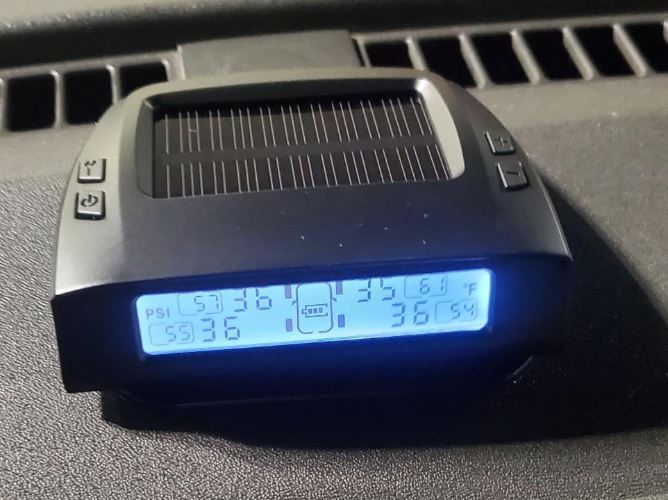
By contrast, a direct TPMS is exactly what it sounds like. It has a set of sensors that directly track your tire pressure. Because it’s measuring the pressure directly, it gets a more accurate reading. These systems can also provide other benefits. For example, they often detect temperature as well as pressure. Knowing this information can be hugely helpful for preventing a blowout.
Direct TPMS systems also provide real-time readings. That isn’t true for an indirect TPMS. If you’re cruising down the highway, you won’t hit your brakes very often, if at all. You could have a severe leak, but an indirect system wouldn’t know. That’s because indirect systems only collect readings when you hit your brakes. And of course, direct systems don’t need to be calibrated. You’ll still get accurate readings when you stop for air. You can even throw a sensor on your spare tire so you’re prepared in an emergency.
Final Verdict
The Tymate Tire Pressure Monitoring System is a powerful device for vehicles of all sizes. The black version is great for most everyday passenger vehicles. The blue version, meanwhile, is perfect for your RV, or for anything else with dual rear axles. Installation is straightforward, and takes only a few minutes.
We had some minor issues adjusting some of the settings. But all in all, the control unit is easy to operate, and it gives you all the information you need. The auto-adjusting screen is easy to read by day or night, and the alerts sound reliably when there’s an issue. And with a wide range of pressure settings, it’s suitable for almost any tires. All things considered, we were very pleased.
Meet Ry, “TechGuru,” a 36-year-old technology enthusiast with a deep passion for tech innovations. With extensive experience, he specializes in gaming hardware and software, and has expertise in gadgets, custom PCs, and audio.
Besides writing about tech and reviewing new products, he enjoys traveling, hiking, and photography. Committed to keeping up with the latest industry trends, he aims to guide readers in making informed tech decisions.

